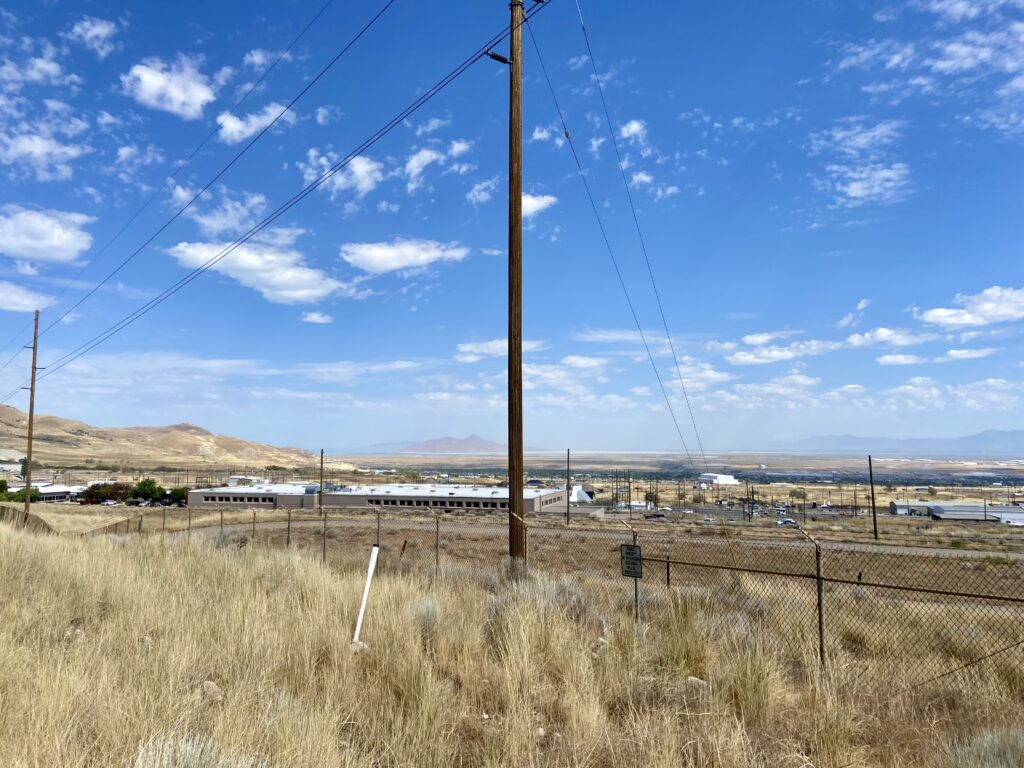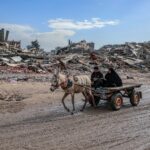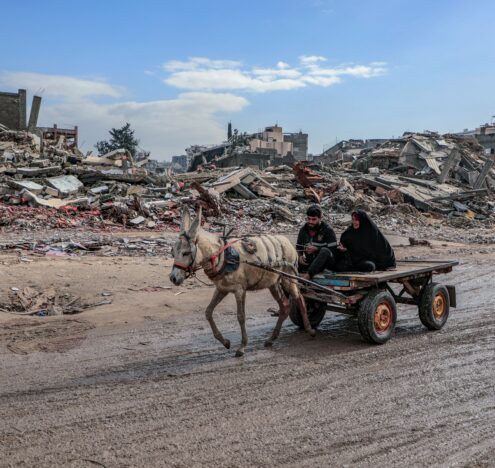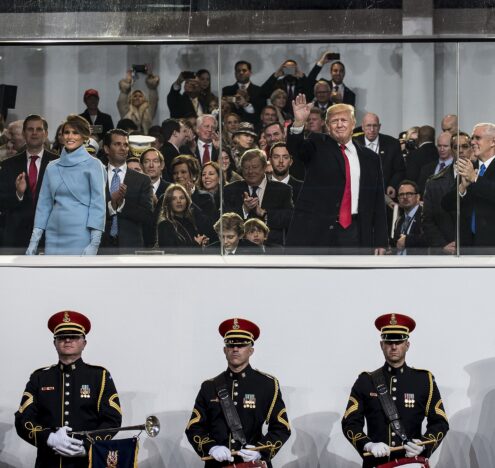Defense contractor Northrop Grumman will avoid the worst penalties it could have faced for the deaths of two workers from argon gas asphyxiation at a missile plant in 2023 due to a settlement with Utah’s workplace safety agency that removed the most severe citations from the case, documents obtained by Inkstick through a public records request reveal.
Northrop Grumman and Utah Occupational Safety and Health (UOSH) reached a settlement that removed two “willful, serious” workplace safety citations — the most severe category used by OSHA — from the case involving the deaths of employees Jonathan Steinke, 24, and Ken Tran, 48. UOSH downgraded those citations to just “serious.” A “willful, serious” violation would have triggered UOSH to refer the case to the local district attorney’s office for criminal prosecution, or justify in writing why it did not do so, and also to include the company on an OSHA blacklist known as the Severe Violator Enforcement Program (SVEP).
In a twist, the settlement both acknowledges the primary safety violation that led to the men’s deaths — that Northrop Grumman “reclassif[ied] a space that had previously been determined to be a permit-required confined space to a non-confined space” — while also vacating two of the original citations that fined Northrop Grumman for removing that classification without documenting its justifications for doing so.
Read Northrop Grumman’s original citations here and its revised settlement here.
Steinke and Tran died while argon gas, which is used in industrial welding processes and displaces oxygen, was leaking into a part of a plant in Magna, Utah, that workers referred to as the “pit,” an underground area below a large vessel known as an autoclave that is used to subject materials to high heat and pressure.
The permit designation would have required the company to perform a series of controls and safety measures to protect employees before entering the pit, such as atmospheric testing and providing workers respiratory equipment. And even though the new settlement removes the key “willful” language that triggers the most severe penalties, it then goes on to order Northrop Grumman to reinstate “full permit-entry protocols” to the basement area where Steinke and Tran died.
The company was tight-lipped about the men’s deaths from the day they occurred, declining to publicly name them and publishing just a short note of condolences in local media. Through public records requests and interviews with families and coworkers, Inkstick became the first outlet to name the men and detail the circumstances of their deaths in an exposé last October.
Read Inkstick’s exclusive: Dying to Make Hypersonic Missiles in Utah
UOSH offered Inkstick Media no explanation for why the agency agreed to downgrade the citations, and the settlement records include no reasoning for the changes. Northrop Grumman did not respond to requests for comment on why it appealed the original citations or a request for a copy of its appeal. The Utah Office of Attorney General did not respond to questions from Inkstick about why it advised UOSH to accept the seemingly one-sided settlement. A spokesperson for the Salt Lake County District Attorney’s office told Inkstick that the worker death case had not been referred to it for criminal charges.
“Criminal prosecutions are one of the few ways that you can actually get under the skin of a major company,” Eric Frumin, the former health and safety director for the labor union-affiliated Strategic Organizing Center, told Inkstick. That’s because the fines levied by OSHA are so low — in the revised settlement the company will pay just $81,918 in penalties for the safety violations that led to Steinke and Tran’s deaths — that they do little to deter corporate wrongdoing, Frumin added.
Northrop Avoids OSHA Blacklist
A less harsh, though still meaningful, response to their deaths would have been Northrop Grumman’s inclusion on an OSHA blacklist known as the Severe Violator Enforcement Program.
“Criminal prosecutions are one of the few ways that you can actually get under the skin of a major company.” – Eric Frumin
Created by OSHA in 2010 to “more effectively focus enforcement efforts on recalcitrant employers who demonstrate indifference to the health and safety of their employees,” the program involves systematic surveillance and inspections of dangerous workplaces. A “willful-serious” fatality citation would have landed Northrop Grumman on the list, though Utah SVEP records Inkstick obtained through a public records request showed that the state only included three small companies on the list during all of 2023 and 2024. The defense contractor never made it on.
In addition to the nuisance of increased scrutiny — during which inspectors could easily find other safety violations to fine the company for — inclusion on SVEP also comes with “reputational damage,” Frumin explained.
Obama-era Regulations Repealed
The fallout from Steinke and Tran’s deaths could have been very different if Republicans hadn’t won control of Congress and the White House in 2016. Workers’ rights were embedded into the federal procurement process for a “brief period of time” due to an Obama-era set of regulations known as the Fair Pay and Safe Workplaces Executive Order, Frumin said. Those regulations required federal contractors — the largest of which are the defense ones — to disclose OSHA and labor law violations before applying for federal contracts and for agencies to deny contracts to companies that repeatedly violate workers’ rights.
“That was an extremely, extremely controversial move by the Obama administration,” Frumin said, “to put labor law violations that far and deeply embedded into the federal procurement
process.” Shortly after the 2016 election, a Republican-controlled Congress voted to repeal the regulations, and then-President Donald Trump signed the repeal into law.
A spokesperson for the Defense Contract Management Agency told Inkstick that “there are no automatic repercussions” for workplace fatalities among defense contractors and that “generally any action taken in response to OSHA violations, including workplace fatalities, would be evaluated on a case-by-case basis rather than trigger an automatic response from the government.” Those repercussions could have included the government ordering the contractor to draw up a corrective action plan to remedy the violations and, if the request is not fulfilled, the government eventually withholding payments or potentially canceling a contract, the spokesperson said.
“Serious and Willful and Repeat Violations”
Northrop Grumman, the world’s largest nuclear weapons manufacturer, is the prime contractor for the new intercontinental ballistic missile, called Sentinel, that is projected to cost more than $140 billion. The nuclear missile is being produced at a number of facilities across Utah, including the Magna plant where Steinke and Tran died last year.
A spokesperson for the Air Force, which manages the contract for the new Sentinel missile did not respond to questions about whether Northrop Grumman faced any of those repercussions due to the fatalities.

Frumin, who has spent five decades advocating for compliance with and strengthening of OSHA laws, didn’t hide his frustration that cases like these could end up having no consequences for a company continuing to receive billions in taxpayer-funded federal contracts.
“All of [the federal procurement process] would have changed if the Congress hadn’t repealed those revised reg[ulations]s in early 2017 that the Obama crowd issued,” Frumin said. “All the serious and willful and repeat violations would have been shoved down the throat of every defense procurement bureaucrat, and they would be choking on them.”
Buoyed by the Sentinel contract, Northrop Grumman has been the largest defense contractor in Utah since 2019, securing $3.5 billion in defense contracts in the state last year.
That corporate behemoth faces a UOSH that is already “anemic” in carrying out its mission to prevent injuries and deaths on the job and seek justice after harm has occurred, Lauren Scholnick, an attorney with Utah Jobs Justice and an adjunct professor of employment law at the University of Utah, told Inkstick.
“When you have a small state like ours, the big employers, you don’t want to run afoul of them as the entity that runs the state,” she said. “There is not a political will to push these things forward.”
New Injuries Investigated, 104 Fatalities Since 1960
Workers continue to suffer on-the-job injuries at Northrop Grumman in Utah. Eric Olsen, a spokesman for the Utah Labor Commission, told Inkstick in September that the commission was “aware and investigating” reports of several recent hand and foot injuries, including allegations that three workers’ feet were crushed by a falling 6,750-pound piece of equipment, at plants in Promontory and Clearfield.
The injuries point to the dangerous nature of the work of missile production. An internal safety training slide for Northrop Grumman, sent by an employee to Inkstick, says that 104 fatal injuries have occurred at Northrop Grumman’s propulsion systems properties since 1960. Those worker deaths included ones at companies Northrop Grumman acquired such as Hercules, which formerly operated the Magna plant, and Thiokol, a chemical company whose search for “cheap, unproductive land” where it could conduct “explosive” operations in the early years of the Cold War are part of the origin story of the nuclear weapons industry in Utah.
Spokespeople for Northrop Grumman did not respond to repeated requests for comment on the alleged workplace injuries and the historical death figures.
Labor Union Sidelined from Settlement
The fallout from the Magna deaths also could have been very different had it not been for loopholes in OSHA law and enforcement that allowed Utah to reach the settlement without including the labor union, the Steelworkers, that represents some workers at the Magna plant.
(That a Northrop Grumman plant has any representation by organized labor is a major anomaly — the company has the lowest unionization rate out of all of the “big five” defense contractors, at just 4%.)
Federal law allows states to opt for enforcement by the federal Occupational Safety and Health Administration or to establish state-level programs, which 22 states, including Utah, have done. Those are supposed to be “at least as effective” as the federal OSHA program. The federal government issues an annual reporting monitoring states’ compliance with that “at least as effective” standard, but Frumin, the workplace safety expert, said that “the Feds’ failure to fulfill its monitoring function has been well documented” by watchdogs like the Government Accountability Office.
Not Enough of a Deterrent
In states that participate in the federal OSHA program, labor unions are, as a right, given the opportunity to review and object to settlements. But Scott Higley, an assistant attorney general who advised UOSH in the settlement, told Inkstick via email that “Utah is a state plan, so it doesn’t have all the same requirements that a federal plan may have.”
He added: “I’m not aware of any legal right or requirement in Utah for a labor union to review or approve an Occupational Safety and Health settlement” and that “[w]ith that understanding, I didn’t speak with anyone from the Union, and I’m not aware of a copy of the settlement being provided to a Union representative for review or approval.”
Scholnick, the employment attorney, argued that low monetary fines like the ones levied against Northrop Grumman were “never going to be enough of a deterrent that stopped the deaths in the future” at a major defense contractor. The most meaningful part of the settlement, therefore, are the so-called “safety enhancements” that Northrop Grumman agreed to, such as reinstating permit controls for the “pit.”
“The important thing is going forward, are they [UOSH] going to really enforce this stuff?” she asked.
Top photo: A US airman shakes an AGM-88 high-speed, anti-radiation missile loaded onto an F-16CM Fighting Falcon at Shaw Air Force Base, S.C., Jan. 13, 2017 (Kathryn Reaves/Wikimedia Commons)




















